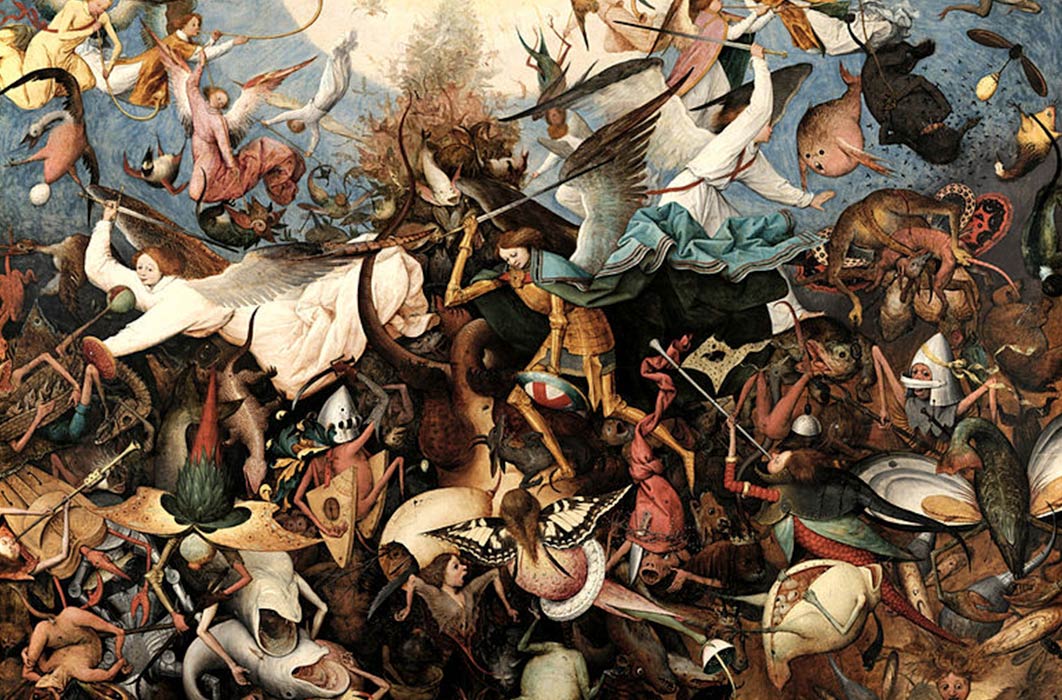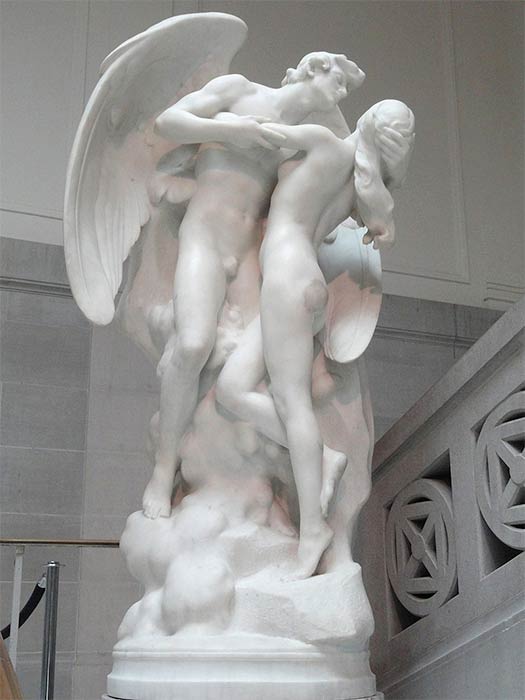
From The Ashes Of Angels – The Forbidden Legacy of a Fallen Race
“And after some days my son, Methuselah, took a wife for his son Lamech, and she became pregnant by him and bore him a son. And his body was white as snow and red as a rose; the hair of his head as white as wool and his demdema (‘long curly hair’) beautiful; and as for his eyes, when he opened them the whole house glowed like the sun . . . And his father, Lamech, was afraid of him and fled and went to Methuselah his father; and he said to him, ‘I have begotten a strange son. He is not like an (ordinary) human being, but he looks like the children of the angels of heaven to me, his form is different, and he is not like us . . . It does not seem to me that he is of me, but of angels . . .’
I Have Begotten A Strange Son
These words form the opening lines to what must be one of the most astonishing yet chilling fragments of religious text ever written. They are the assertions of the antediluvian patriarch Enoch as he describes the sheer distress and horror that accompanied the miraculous birth of a son to his grandson, Lamech. The passage is taken from the Book of Noah, an ancient script of Hebrew origin appended to the more famous Book of Enoch, a pseudepigraphal (falsely attributed) work, considered by scholars to have been put together in stages during the first half of the second century BC.
The predicament conveyed by these revealing lines seems manifestly clear: Lamech has recently taken the hand of a woman who has given birth to a child that bears no resemblance whatsoever to its immediate family. His appearance is entirely unlike other 'human beings', for his skin is white and ruddy, his long curly hair is white and 'beautiful', while his eyes mysteriously enable the whole house to 'glow like the sun'. From this specific appearance Lamech can only conclude that his wife has been unfaithful, since the infant resembles 'the children of the angels' who are 'not like us'.

The Sons of God Saw the Daughters of Men That They Were Fair, sculpture by Daniel Chester French. (CC0)
This seems an extraordinary conclusion on the part of Lamech, and a very strange subject for a religious scribe to invent without good reason. If it can, for a moment, be accepted that this account records an actual event in the history of human kind, then it implies that the strange appearance of this child matched the offspring of angels, and must by inference have been the product of the union between a mortal woman and a divine 'messenger', a 'heavenly intelligence' in the service of God himself. Surely this is impossible, for according to Judaeo-Christian tradition angels are incorporeal, having neither form nor substance. They are certainly unable to reproduce by immaculate conception. If this is correct, then the story of the birth of Lamech's strange son is in direct contradiction to the rabbinical teachings of Judaism and the creed of the Christian faith. Yet here it is, in print for all to see—heretical words implying that angelic beings were able to produce children by cohabiting with mortal women.

Genesis Apocryphon, a portion of the Dead Sea Scrolls that features Noah (Geza Vermes/ CC BY-SA 4.0)
Genesis Apocryphon
For any reader with an open mind, this is a perplexing enigma further deepened by a more personal portrayal of the birth of Lamech's son, which is to be found in a poorly preserved fragment of religious text, discovered with many other rolled-up brittle scrolls inside a cave overlooking the Dead Sea in 1947. Known to scholars today as the Genesis Apocryphon, this unique work was written in Aramaic, the Syriac language adopted by the Hebrew scribes following the Jews' exile in Babylon during the sixth century BC. Dating back to a similar age as the Book of Enoch, the Dead Sea Scroll in question would have originally contained an alternative, fuller account of the events featured in the Book of Genesis; however, it was so badly damaged when found that only the birth of Lamech's son, an account of Noah's Ark and the biblical Flood, along with the wanderings of the patriarch Abraham, have been preserved.
- The Nephilim Tradition From Ancient Sumer
- Devils or Angels? Defining the Dark Entities of Christianity’s Past
- Ancient Angels: Heavenly Messengers or Myths? The Origins of Cherubim
The fragmentary text was translated by Nahman Avigad and Yigael Yadin in 1954 and published under the title A Genesis Apocryphon two years later by the Hebrew University, Jerusalem. With respect to the account of the strange birth of Lamech's son, it differs principally from the version given in the Book of Enoch, in that the narrator has altered from the patriarch Enoch to Lamech himself—it is he who recalls the scene in his own words. The narrative begins just after the strange birth as Lamech starts voicing his suspicions concerning the suspected infidelity of his wife, here named as Bathenosh and referred to also as his sister—for he says: “Behold, I thought then within my heart that conception was (due) to the Watchers and the Holy Ones . . . and to the Nephilim . . . and my heart was troubled within me because of this child.”




